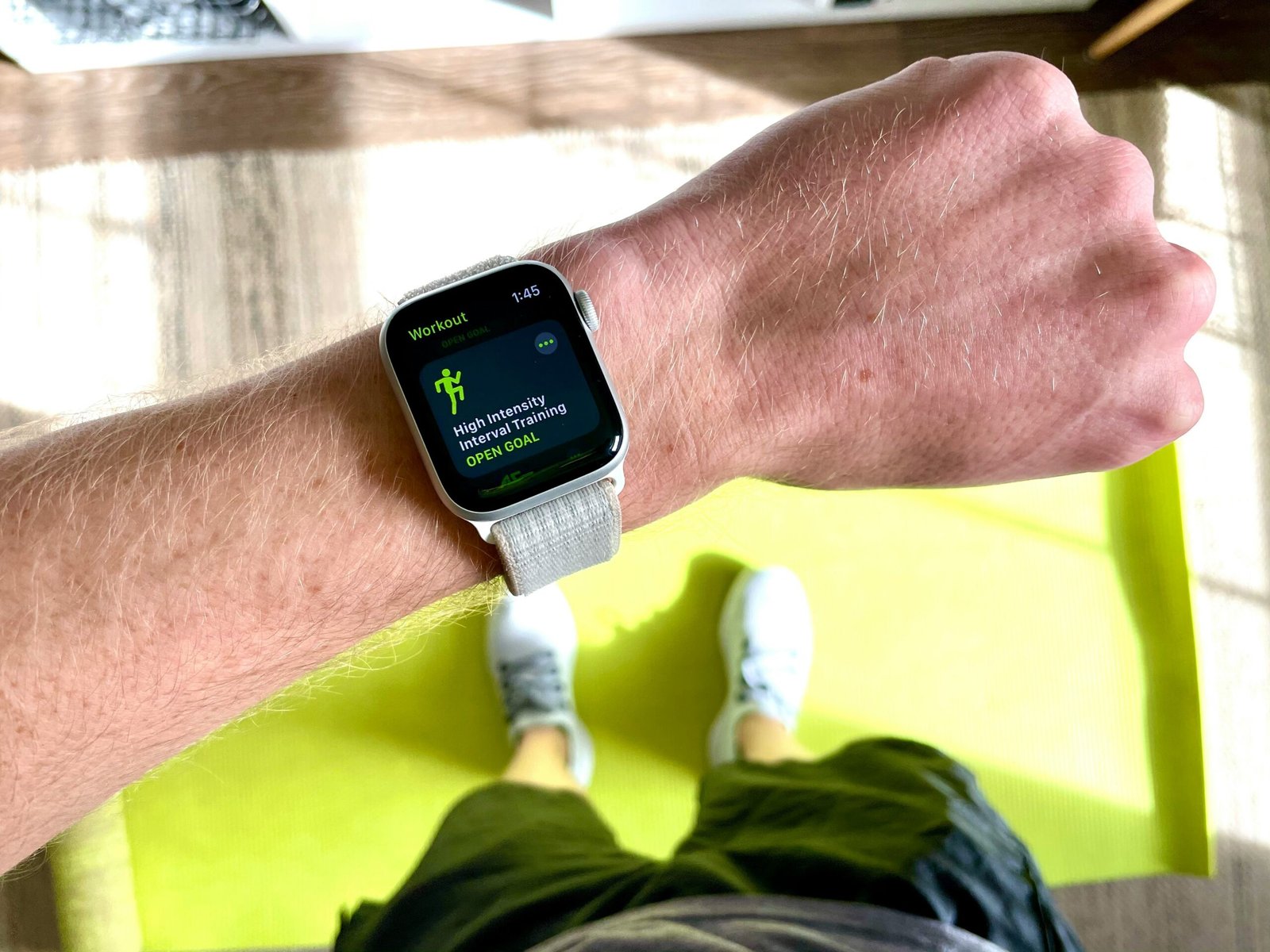Is your current fitness tracker helping you reach your goals or just looking good on your wrist? In 2025, everyone claims to make the “most accurate” or “smartest” device, but few actually deliver. Between sensors, battery life, and app integration, it’s easy to get lost in the tech talk.
We tested the big names —
Apple’s still the one to beat. The Series 9 nails accuracy with GPS and heart rate tracking that feels dialed in. During our tests, outdoor distances stayed impressively consistent, between 1.87 km and 2.21 km. That’s the kind of precision that actually helps when you’re training for something serious, not just counting steps to the fridge.
The design’s sleek, the app ecosystem is unmatched, and those coaching tools? Spot on for everyday motivation. The downside? The battery. It struggles to last a full day if you’re tracking workouts or streaming music. But for what it does, you might forgive it.
Pros:
- Excellent outdoor tracking accuracy
- Smooth integration with fitness apps
- Polished design and easy navigation
Cons:
- Battery drains quickly with active use
Whoop feels different — and that’s not a bad thing. It doesn’t have a screen, which at first feels strange, but the trade-off is serious recovery insight. Athletes love it because it focuses on heart rate variability, strain, and sleep performance. You’ll know when to push and when to chill.
The biggest drawback? It doesn’t track indoor runs or gym workouts with GPS. So if you’re training inside, data gets patchy. Also, there’s that subscription fee. It’s not cheap, but if you’re into performance analytics, you’ll see the value fast.
Pros:
- Stellar sleep and recovery tracking
- Long battery life and continuous data
- Minimalist comfort for all-day wear
Cons:
- No indoor GPS
- Monthly subscription adds up
Fitbit’s still holding its own. The Charge 6 hits that sweet spot between affordability and usability. It gives you step counts, calorie tracking, and a decent heart rate monitor. But if you’re obsessed with accuracy, you’ll notice the cracks. During our month-long test, it often overcounted steps and calories, which can throw off your goals.
Still, it’s reliable for casual users who just want a snapshot of their health without spending big.
Pros:
- Great price for solid features
- Lightweight and easy to wear
- Integrates well with Android and iOS
Cons:
- Inconsistent tracking accuracy
- Limited advanced analytics
What Really Sets These Trackers Apart
1. GPS and Accuracy
Apple wins this one. Its built-in GPS delivers consistent results, especially outdoors. Whoop struggles indoors, and Fitbit’s readings tend to drift slightly during longer sessions.
2. Heart Rate Monitoring
Apple’s sensors are sharp. You can rely on them even during high-intensity workouts. Whoop does a fantastic job with long-term heart rate data, while Fitbit sometimes overshoots during intense movement.
3. Battery Life
Garmin’s Forerunner series deserves a shoutout here. It lasts up to 14 days in smartwatch mode and 42 hours with GPS — perfect for long-distance runners. Whoop’s battery easily spans multiple days, but
How We Tested
We didn’t just glance at specs. Each device went through structured tests in real-world conditions.
Here’s what we did:
- Set up all devices under the same conditions.
- Tested both indoors and outdoors, tracking runs, walks, and workouts.
- Recorded data consistency over time.
- Evaluated app usability and how clearly data was displayed.
The
Our Expert Take
Here’s the short version:
The “best” tracker depends on your lifestyle. If you’re a tech lover who wants everything in one device,
Final Thoughts
The best fitness tracker isn’t just about specs — it’s about fit. Your goals, your habits, your style.
Whichever you choose, focus on what actually keeps you consistent — comfort, simplicity, and data you can trust. A tracker should help you move smarter, not just count steps.
FAQs
What’s the most accurate fitness tracker in 2025?
Garmin Venu 3. It nails heart rate, step count, and GPS tracking with next-level precision.
Which tracker has the best battery life?
Garmin Forerunner series — up to 14 days on a single charge.
Is
Yes, if you want the best overall experience and already use an iPhone. Just expect to charge it daily.
What’s the best fitness tracker under $200?
Fitbit Inspire 3. Simple, dependable, and good for everyday health tracking.
Which tracker’s best for Android users?
Samsung Galaxy Fit 3 — smooth compatibility, accurate sensors, and built-in NFC payments.
Do subscription trackers really add value?
They can. Whoop’s $359 plus membership gives advanced analytics and coaching. If you prefer a one-time buy, Fitbit Charge 6 ($159) covers the basics without extra fees.


![Best Fitness Tracker Comparison 2025: Real Tests, Real Results 1 Apple Watch Series 9 [GPS 45mm] Midnight Aluminum Case with Midnight Sport Band M/L (Renewed)](https://m.media-amazon.com/images/I/41d-SELeXML._SL500_.jpg)

